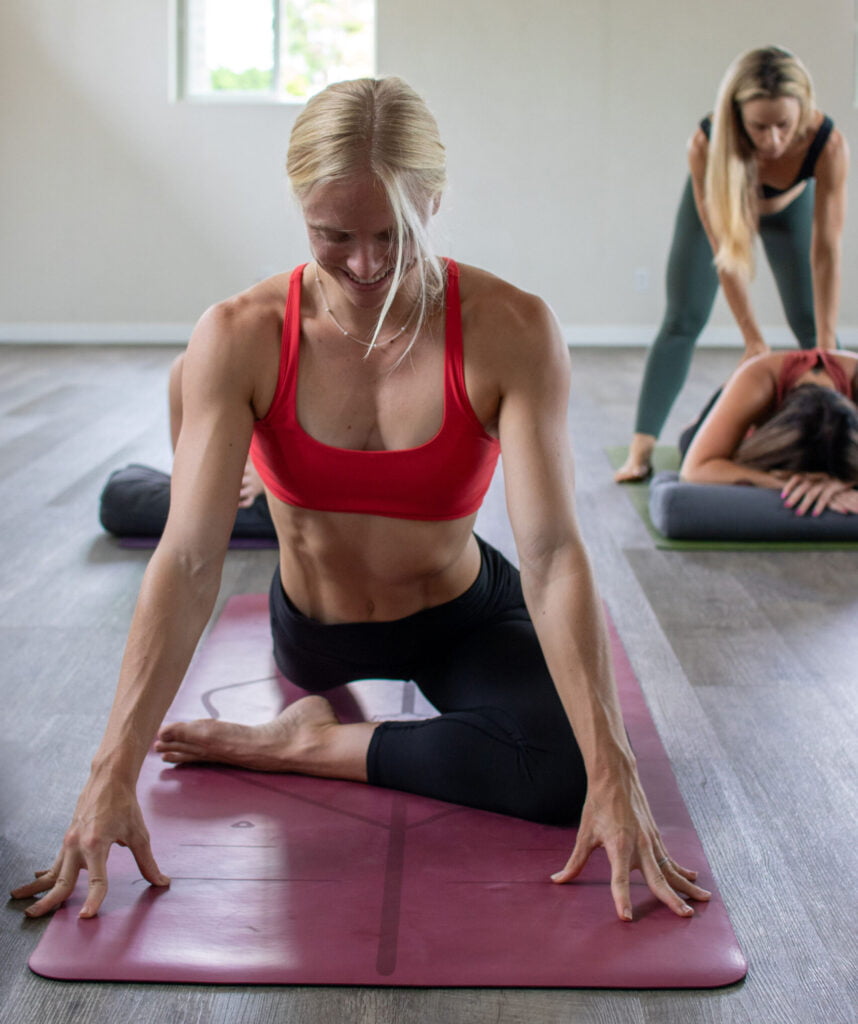Whether you’re a seasoned yogi or you’re just getting started, knowing that yoga comes in many different forms may have a transforming influence on your practice. For instance, there are various advanced yoga class types that are available and suitable for you, whether you desire a more physically challenging practice or a simple, peaceful, and contemplative class. Also, although most varieties of yoga are based on the same fundamental positions or asanas, individual features of each style provide unique experiences that eventually distinguish each type.
Moreover, variations will occur based on the instructor, since each style differs from the others. Trying a few different types and instructors before deciding on your favorite can improve your entire yoga experience and push you to go outside your comfort zone.
Although this list is far from complete, let this list of common advanced yoga class types help you better comprehend this magnificent combination of breath and movement named yoga.
Hot Yoga
Heat is an excellent technique to cleanse and increase flexibility, and hot yoga will undoubtedly energize you. The environment distinguishes hot yoga from other high-power styles: this yoga takes place in a hot chamber that is normally set between 80 and 100 degrees Fahrenheit.
The movement consists of varied sequences and breathing exercises, often repeated twice. Hot advanced yoga class isn’t for the faint of heart, but it will leave you looking and feeling like a fitness warrior when you’re done.
Ashtanga Yoga
Ashtanga yoga is full of force, heat, and energy. This modern type of yoga was developed in the twentieth century. Moreover, Ashtanga advanced yoga class emphasizes synchronizing breath with a quick movement, which will likely raise your heart rate and lifestyle.
Vinyasa Yoga
Vinyasa means “to put in a special way,” which refers to yoga poses in this situation. Vinyasa yoga is often regarded as the most athletic yoga practice. In the 1980s, Vinyasa yoga was modified from Ashtanga yoga. Many styles of yoga, including Ashtanga, power yoga, and pranayama, may be classified as Vinyasa flows.
Yoga Nidra
Yoga Nidra, also known as yogic sleep, aims to ease people into a profoundly relaxed state of awareness between sleep and awareness. Yoga Nidra, developed by Swami Satyananda Saraswati in the early 1960s, employs guided meditation to create this near-sleep condition and is regarded as one of the discipline’s most calming and sublime forms.
Another advantage of a Nidra advanced yoga class is that it is simple to learn and modify, allowing yogis of all abilities to get the advantages of decreased stress and increased sleep!
Hatha Yoga
While a Hatha class is typically a good place to start for those new to the practice or searching for a less strenuous experience, it is crucial to realize that Hatha is a broad word that may apply to many distinct types of yoga. Because Hatha is such a broad phrase, it’s a good idea to ask your local studio about the speed of the class before you arrive if the pace is important to you.
The term “Hatha” literally means “power.” Integrating asanas (yoga postures) with pranayama (breathing exercises) to bring tranquility to the body and mind is a trait shared by all iterations of Hatha yoga.
Yin Yoga
Yin yoga is a significant de-escalation from Hot yoga or Vinyasa yoga. Yin yoga, like Hatha yoga, is thought to suggest that movement happens at a slower speed. Yin yoga incorporates traditional Chinese medicine concepts, with Asanas sustained for an extended duration.
Asanas may be held for 45 seconds to two minutes for beginners and five minutes or longer for expert practitioners. It is crucial to remember that, although Yin and Hatha yoga is conducted at a slower pace than their more fast-paced cousins, they are by no means easier.
Instead of flowing from one action to the next, a concentration on holding poses stimulates various muscle regions and may appeal to certain personalities more than others.
Iyengar Yoga
Iyengar Yoga is a discipline that emphasizes exact alignment and anatomical awareness. The goal is to alter postures in diverse ways so that anybody in one form or another may perform them. It is ideal for persons with impairments or injuries because of its outstanding use of props and adjustments.
An advanced yoga class should be inclusive and accessible. It should create a friendly, supportive workplace devoid of criticism and competitiveness. You should never be in any pain or discomfort. Choose a class that enables you to go at your speed.
Furthermore, as you try out various yoga sessions, you’ll notice that some align more with your ideas than others. What counts most is finding a class that focuses on the breath, fosters self-kindness, and feels comfortable.


